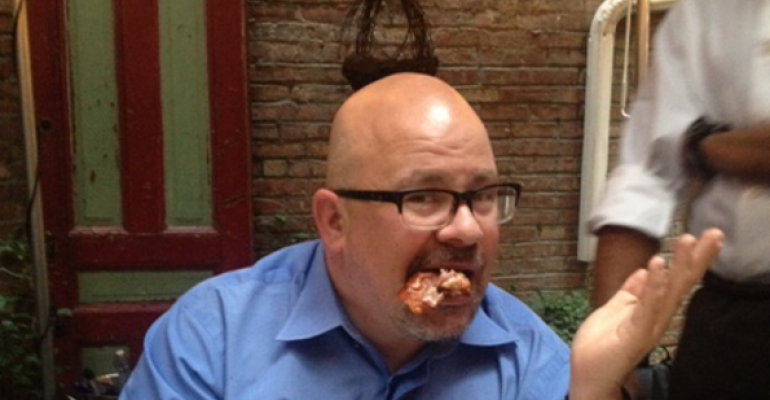I like hip hop artists Macklemore and Ryan Lewis. Their tunes are catchy and exuberant, and their lyrics are about dancing with joy and struggling to achieve your dreams and treating people fairly (and of course about love lost and found — it’s pop music after all).
And thrift.
My favorite song in their album The Heist, released last year, is “Thrift Shop,” in which Macklemore celebrates the joys of finding excellent, unconventional clothing at low prices that allows him, he implies, to achieve success in courting women in dance clubs — something, he argues, you will not do by relying on brand names or wearing the same clothing as everyone else.
And besides, he says, spending $50 for a T-shirt is stupid.
Many people would argue that “Same Love,” which advocates legalization of same-sex marriage, is the most socially “important” song of the album, and maybe so. But I’m going to throw my support behind “Thrift Shop,” because in a world of dwindling resources and one in which more and more people are struggling to make ends meet, it’s worthwhile to place value on conservation, creativity and ingenuity.
What does that have to do with food, you ask?
I’m glad you did.
I was reminded of the relationship between thrift and food at a recent dinner at Cannibal, a restaurant in New York City that specializes in whole animal cooking.
The occasion was a wine tasting of Kaiken wines.
The wines are named for a type of goose — the only one that flies over the Andes Mountains from Chile into Argentina.
The Montes family, which produces some of Chile’s most appreciated wines, followed that goose’s example, crossed the mountains and opened wineries there, too.
Kaiken chief winemaker Aurelio Montes Jr. led a bunch of food-and-beverage writers through a tasting of those wines at Cannibal and then treated us to an asado — an Argentine-style dinner of roasted meats.
This particular dinner was augmented by some salads, but the centerpieces were a whole suckling pig and a whole prime rib of beef.
That’s a lot of animal protein for the roughly 17 people at the dinner to eat all by themselves.
I did my part.

This is a picture me chewing on one of the pig’s crunchy ears. I also snacked on the snout, which might sound gross to you, but it had a nice crunchy skin covering succulent meat.
You should try hog snout sometime.
But we still didn’t finish all of that meat, so the staff at Cannibal divided it up into takeout boxes and handed them to us as we left.
After all, the meat had already been on the table, so it would violate health codes to hand it over to a food bank, and wasting food is just wrong.
I was raised that way. Growing up, my brother, sister and I were never required to put food on our plates that we didn’t want, but once it was there you’d better believe we were going to finish it.
Because, as I said, wasting food is just wrong.
As you know, many diners don’t feel that way, and certainly at media dinners sometimes copious food is brought out, picked over casually and thrown away. It’s a shame, but as a guest it would be untoward for me to protest, or demand that they wrap it all up.
Attitudes toward leftovers have changed a bit in this post-2008 world. After the beginning of the Great Recession I began to hear reports of guests even at fine dining restaurants asking for doggie bags. Maybe that was a sign of economizing, but it seemed more like a moral shift — an understanding that (I’ll say it for a third time) wasting food is just wrong.
So I hope the example set by Cannibal will be copied by other restaurants, and I’m pleased the report that I’m having leftover pork for dinner tonight.

